The Municipal House or Obecni Dum is one of Prague‘s most iconic Art Nouveau buildings. I was shocked upon walking in the door that this hidden gem isn’t talked about more online. It’s interiors are so stunning they rival some of the most regal palaces around the world. We had been walking around the Old Town looking for somewhere to eat when our guide recommended Prague’s Municipal House. We were blown away by the beauty and surprised that this dining experience didn’t cost an arm and a leg. Stunning environments and yet accessibly priced menus are a hard combination to find but something which Prague is so great at providing.

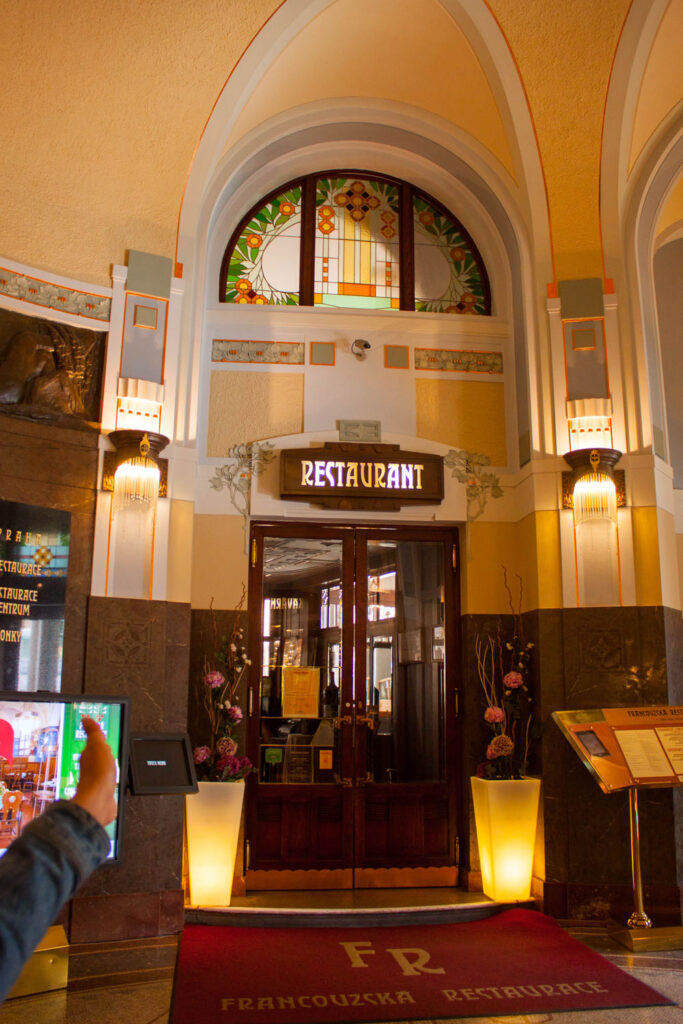
History
The medieval Royal Court of Prague once stood on this site. From 1383 until 1485, the Kings and Queens of Bohemia lived on the square nearby in their magnificent palace. The imperial residences were connected to the Royal Court by the nearby Powder Tower. But after Prague Castle was built, Vladislav II moved the Royal Court out to the newly fortified castle complex. After years of being unused, the old Royal Court building was eventually demolished.

But in 1905, the city started construction on a Municipal House in the same spot as the previous court. They had it built here as this new building would serve as a modern interpretation of a medieval royal court. The building’s architects Osvald Polívka and Antonín Balšánek, set out to design the most magnificent establishment for high society. It was going to be THE PLACE to hold social events, concerts, parties and even public exhibitions. The architects hired some of the best Czech artists to decorate the interior of the new Municipal Hall. These artists’ work elevated the illustrious building’s status even further, creating a kind of artistic time capsule.

Admission
Inside there are a series of bars and restaurants open to the public. But to explore the entirety of the Municipal House, you must book a guided tour. These tours run in both Czech and English several times throughout the day. There are also handouts in other languages to allow more people to experience the building. The tour route goes from the famous Smetana Hall, through to the Confectionery hall. It then stops inside the Moravian Slovak, Božena Němcová, and Oriental Parlours. Followed by the Grégr, Palacký, Riegr, Sladkovský and most importantly, the Mayor’s Hall! The tour ends inside the American Bar in the basement of the Municipal House. Tickets for the tour cost 200 CZK per adult and reservations are recommended but not necessary.
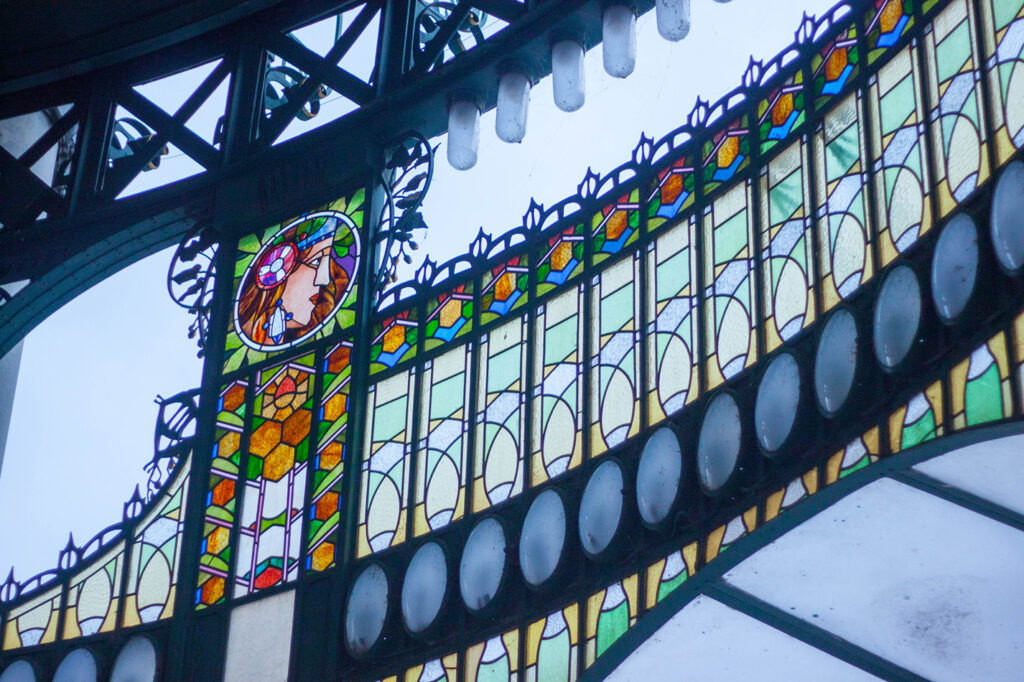
Access
The Municipal House is located inside the old town and is easily walkable if you’re in the area. The closest metro station is Náměstí Republiky, which is only a four minutes walk from the Municipal House. You can also take trams No. 3, 9, 14, 24 to the Jindřišská stop, a 5-minute walk to the Municipal House.

Art Nouveau Architecture
The Municipal House became an icon for Prague’s fantastic Art Nouveau architecture from the minute it opened. Classical Art Nouveau features included in the building were; asymmetrical shapes, arches and curved forms, a large glass dome, plant-like embellishments, mosaics, stained glass and Japanese motifs.
Facade
The exterior stonework is intricately carved, with vegetal details blooming from reliefs in every corner. The roof is replete with green and red tiles creating a snakeskin-like effect covering the top of the building. Along the facade are curving, ornate bronze balconies with golden leaves growing throughout.

Dome
The piece-de-resistance of the building is the bright green-domed roof, complete with gold trimmings. It feels like a regal crown on top of the rest of the structure. The dome also contains one of the most pleasing stained glass ceilings, which floods natural light into the concert hall. The dome was made to emphasize the Municipal House as a temple of the arts.
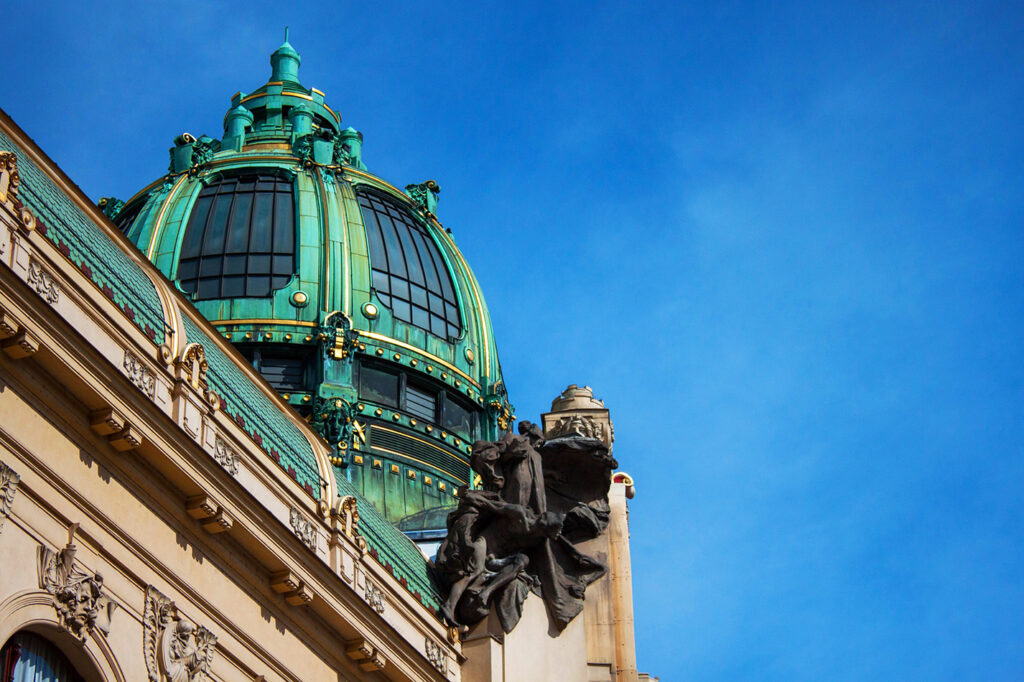
Entrance
Above the building’s entrance, look up to see a brightly coloured mosaic designed by artists Karel Špillar. This piece is called “Prague Apotheosis.” It represents the oppression and eventual rebirth of the Czech people called. An apotheosis is the “highest point in the development of something; culmination or climax,” represented here in the architecture of Prague’s Municipal House.
On either side of the mosaic are two bronze sculptures. The one on the left is called the “Humiliation of the Nation.” The woman in the center is surrounded in flowing robes, like angel wings. She holds her head to the side, almost as if ashamed to show her face. The sculpture on the right, contrastingly, is called the “Ressurection of the Nation.” This woman stands tall, with a bronze eagle perched on her forearm. The eagle, the symbol of Moravia and the rebirth of the Czech Republic. The Municipal House was built at the very end of the Czech National Revival movement. This cultural event occured during the 18th and 19th century. It’s purpose was to revive the Czech language, culture and national identity.
Before you walk inside, you pass under a splendid wrought-iron canopy, covered in brightly coloured stained glass. The frontispiece a great example of how art nouveau uses every architectural details as an opportunity for ornamentation. The two columns supporting the entrance are topped with two brozen figures. In their are they carry an electric lantern made by Karel Novak. The models appear to mirror the shape of Atlas as he carries the world on his back. Almost as if to say that this building is itself on top of the world.
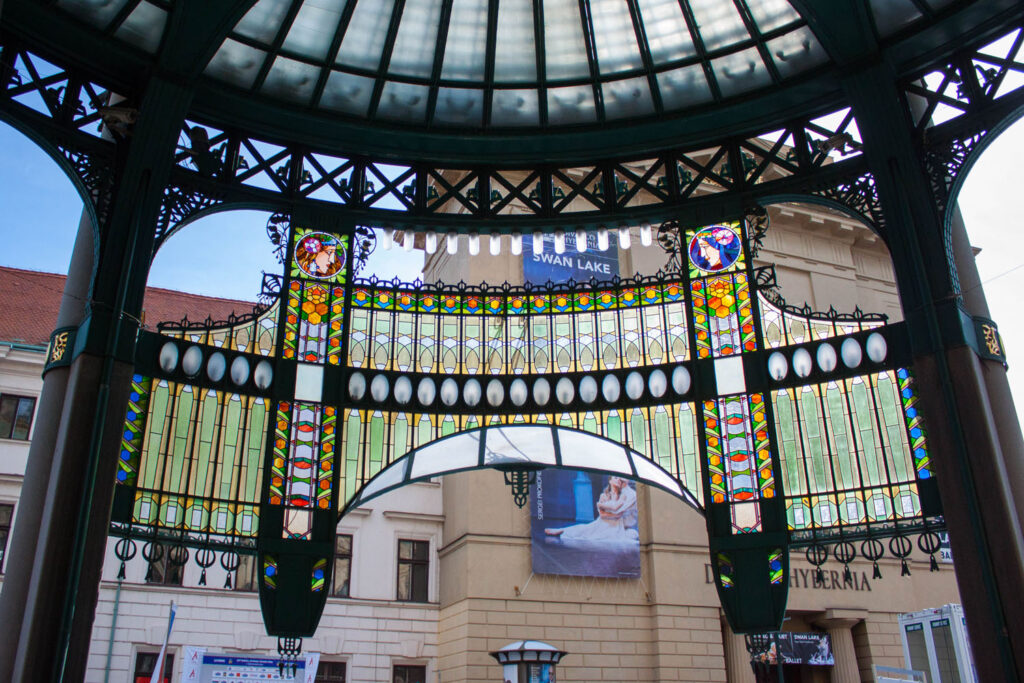
Interior Room & Halls
Inside the Municipal House, there are so many different places to eat, drink and be entertained. Each one of the rooms and halls inside was named after notable individuals from the Czech culture. You can eat lunch in an elegant French restaurant. Or drink pivo at a traditional Czech beer hall. Perhaps you want to enjoy a slice of cake (or two) at the stylish Czech café, or sip cocktails at the “American Bar“. If you really want to splash out you can attend a first-class concert at the fabulous Grand Concert Hall, all under one roof. All these places are accessible to the public.
If you cannot take a guided tour of the rest of the interiors read the rest of this post. I’ve made sure to talk about the most important rooms inside the Municipal House. This way, if you’re sitting inside the cafe, you can still peruse images of what the rest of the building looks like.

Francouzska Restaurant
If you don’t have time for a concert but are longing to enjoy the elegant art nouveau environment, choose from one of the many dining options inside the Prague’s Municipal House. Francouzska Restaurant is one of the finest culinary experiences you can have in Prague. Golden art nouveau inspired chandeliers pour off the high ceiling. The large windows allow the entire room to fill with light and all the gilt and glass details simply glimmer with excitement.
Throughout the restaurant, you’ll find original furnishings from the beginning of the 1920s. Even the silverware is period-perfect. Throughout the restaurant, you’ll find reproductions of decorative paintings such as “Prague Welcoming its Guest” by J. Wenig and “Hradcany and the New World” by A. Zahel in the salon. Stucco designs of the art nouveau period patterns adorn entertaining diners. Dining here is like entering a living museum. This is the most expensive of all the restaurants in the Municipal House but worth it for the experience. The restaurant is unfortunately temporarily closed until the end of 2020 for renovations.
The Plzenska Restaurant
The Plzenska restaurant, which is on the lower level, is a slightly more affordable option. It is famous for its traditional Czech cuisine and friendly beer hall atmosphere. I think this is truly the best beer hall in the entirety of Prague. It is stunning to look at while also comfortably casual. There is something about the brightly coloured blue tiles set against the rich oak panels and the simple, yet elegant, stained glass that make you feel like you’ve been invited into someone’s prized dining room. The food here is also impeccable. If you have yet to sample any classic Czech meal, this is the perfect place to do so.
American Bar
Also, in the basement is the “American Bar.” Here you can get a well-made cocktail or spirit and enjoy the swish atmosphere of a 1940’s salon. The vaulted room features a vestibule decorated with the picture “Heron” by Mikolas Ales. Several copies of the artist’s famous drawings are also located inside the recesses of the bar. The American Bar was one of the first public establishments which ladies could visit without a male accompaniment and that atmosphere of bohemian freedom is still present today.
Kavárna Obecní dům Café
To finish off your dining options inside the Municipal House, wander into the Kavárna Obecní dům café, on the ground floor. This cafe is considered to be one of the best in the world. Although they are most famous for their desserts, this is also a great place to grab a bite to eat if you’re looking for a good meal at a reasonable price.
All the furnishings from the chandeliers, mirrors and fabulous electric lighting in here was designed by Osvald Polivka, one of the most aesthetically pleasing art nouveau designers of the time.
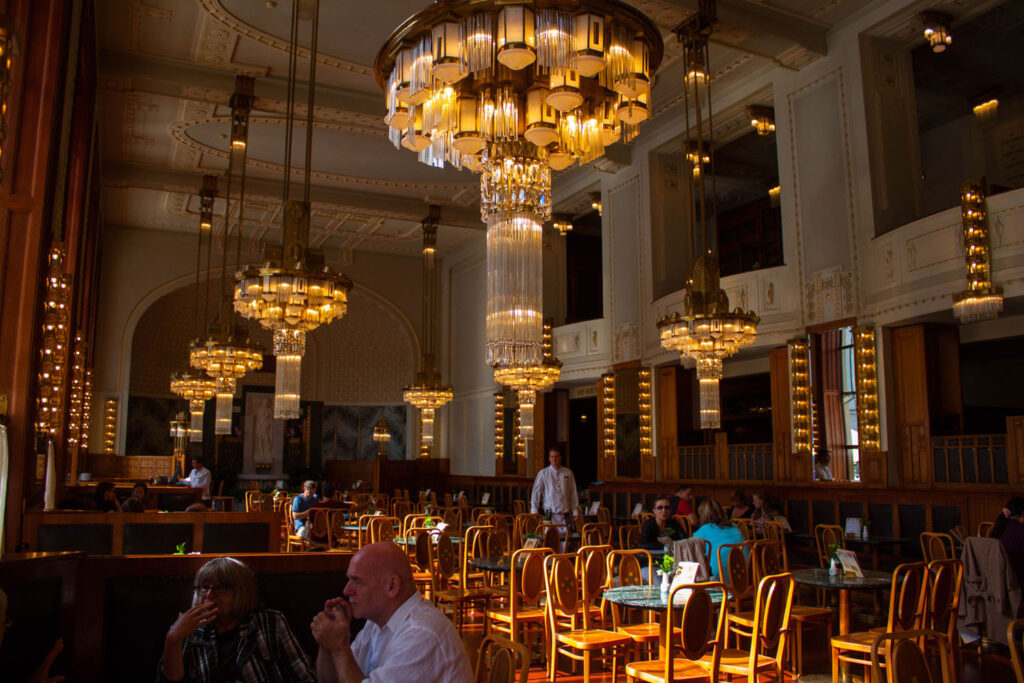
It’s open late, so it’s a great option to grab that last coffee before heading out for a night on the town, or a nightcap before going to bed (which is more my speed). During the summertime, the patio out front is a charming place to people watch. You can sip your coffee early in the morning watching the locals heading off to work.
Although main courses are delicious, their sweet treats are where they really shine. Homemade cakes make the rounds in glass trolleys so you can see the goods before you buy them. Their cream cake with fresh berries is a incredible creation that will satisfy any palette.

While waiting on your food take some time to wander around the restaurant. Check out the fountain at the back of the cafe with a sculpture of a beautiful Nymph in the center by artist Josef Pekarek.
Tours of the Municipal House
To explore the private rooms throughout the rest of the building, you’ll need to book a guided tour. The tour will take you throughout the Smetana Hall, Confectionery, Moravian Slovak Parlour, Božena Němcová Parlour, Oriental Parlour, Grégr Hall, Palacký Hall, Mayor’s Hall, Riegr Hall, and Sladkovsky Hall. The tours run about twice a day in English and cost 290 Kč for adults.
Mayor’s Room
If you’d rather just read about what’s inside, while you enjoy your meal, I’ve written out the details of the other fantastical spaces inside Prague’s Municipal House. Hidden away behind locked doors, up on the third floor, accessible only by guided tour or private rental, is the great Mayor’s Room. Seeing as this was the room where guests initially would be greeted upon entry, the architects wanted it to feel so awe-inspiring right from the get-go. The architects hired the best art nouveau artists to decorate their interiors, and none were more infamous than Alphonse Mucha himself. Mucha had been charged with painting the interior of this superior room. Mucha not only painted all the murals you see here but also created everything from the decorations to the furniture, curtains and even down to the very last lamp.
Vaults & Lunettes
Each of the vaults holding up the great dome is painted with figures from Czech history framed alongside symbolic images of the civic virtues. The most notable of them is Jan Hus, dressed in his scholarly dark robes, with the beautiful woman of Justice, standing behind him. You can also spot general Jan Žižka painted alongside Fortitude and the Chodové (a Medieval guard) with the image of beady-eyed Vigilance. Jan Amos Komensky is painted with Loyalty, and St. Ludmila and St. Wenceslas are swathed in the arms of Maternal Wisdom.
On the lunettes that encircle the room are various paintings by Mucha detailing different morality themes upon which the Czech culture was built. A darkened image displays the “Holy Mother of a Nation, Accept love and fervour of your son.” A fiery portrait of three people depicts “With Power comes Freedom – with love, Unanimity.” On the right, a haunting painting shows tortured souls lost in the darkness, an image representing the theme “Humiliated and tortured – resurrected, you will be in our homeland.”
On the walls in between each of these murals are silver capitals with women’s faces carved upon them. These faces represent loyalty, fortitude, maternal wisdom, justice, independence, non-submissiveness, vigilance and strength. The embroidery on the curtains here was designed by Mucha himself and features a motif of peacocks abstracted plumed feathers.
On the walls of the mayor’s hall are a series of armchairs. Inlaid into the backrests are paintings entitled, “The Czech Crown” and the “Weeping over the Destruction of the Homeland” by Alphonse Mucha.
Palacký Hall
To the west of the Mayor’s Room is Palacký Hall. This room is covered in figurative paintings by Jan Preisler. The interior fur shined with art nouveau chandeliers, brass mirrors all in Assyrian style. The Assyrian artistic style is from the ancient world, first appearing in 1500 BCE but breathed new life by the art nouveau period. The style features relief sculptures made in stone.
A bust of Palacký by Josef Václav Myslbek stands in the rooms honouring the Czech historian and politician. Palacký was one of the most influential people in developing the Czech National Revival and called “Father of the Nation.” On the ceiling is a great fresco featuring the scene of a young boy and girl surrounded by a flock of flying birds.
Grégr Hall
Further to the west, we find Grégr Hall. This long room features a large balcony on its left-wing, providing the most stunning views across the city. The room is tiled in artificial marble, giving it a regal, luxurious appearance. On the western wall, we can find a triptych entitled “Songs of love, war and death” by František Ženíšek. There is another triptych called “Life, poetry, death” by the same painter on the ceiling. It’s interesting to see so many death paintings in such a vibrant space, but perhaps this image of impending death allows us to remind us to live life to the fullest.
Oriental Lounge
At the end of Grégr Hall, there is a small staircase leading to the Oriental Lounge. This room features decoration inspired by Islamic-Anatolian art. It was originally known as the Serbian lounge. Anatolia had a strong Byzantine and Armenian Christian heritage, which is visible in its artforms.
Riegr’s Hall
The room, opposite Palacký Hall, called Riegr’s Hall, is embellished with images of notable Czech personalities painted by Max Švabinský. He titled the paintings “Czech Spring” as it features all these different influential men together in imagined scenes of an idyllic springtime. Busts of politicians František Ladislav Rieger by Josef Václav Myslbek are also featured inside this room. The lower half of the room is painted a rich Azul blue and covered in lush blue stuffed benches.
Confectionary
At one point in the building’s history, the Municipal House had its own confectionery and patisserie! It was the largest of the relaxing salons, often called the “ladies’ parlours.” Although no sweet treats are being made fresh inside this room today, it is still one of the most fabulously decorated rooms in the building. Filled to the brim with gilt stucco decorations and oak framed mirrors, the place absolutely sparkles.
The Smetana Concert Hall and Ballroom
The Smetana Concert Hall and Ballroom are located right under the magnificent glass dome. To visit this place outside of being on tour, you’ll need to have booked a ticket to see a performance. The concert hall plays hosts to many musicians and is the home to the Czech National Symphony Orchestra.
Inside this room, you’ll find artwork pieces by Alfonse Mucha, Jan Preisler and Max Švabinský decorating the ceilings and walls. The interior of the concert hall is covered in white stone and gold filigree. The entire theatre is illuminated by hundreds of tiny lights, casting a gentle golden glow upon the people below. The stage is framed by arcing sculptures depicting Vyšehrad legends and Slavic dances. It is truly an honorific place of Czech arts and culture.
iMucha’s Exhibition
Currently on display inside the Municipal House is the iMucha Exhibition. This gallery uses technologies of the 21st century to display numerous of Mucha’s art posters which have been digitally remastered to be displayed with motion. Transforming the static material into a lifelike work of art. The exhibition also presents over 200 artifacts from the artist’s life. Tickets to the exhibition costs 290 Kč for adults but there is a discounted price if you book with a guided tour. Running until March 2024.
If you have the chance to tour Prague’s Municipal House, run, don’t walk, to visit! Don’t let the rather dull name of the building fool you; this place is one of the most outstanding artistic achievements of the Czech National Revival and deserves all your attention. Plus, there is nothing better than dining inside an incredible environment to fill your eyes and mind with wonder and excitement.
Let me know what treasures you discovered in Prague or if you’re planning on visiting the Municipal House for yourself on your next trip!
Happy Travels, Adventurers!
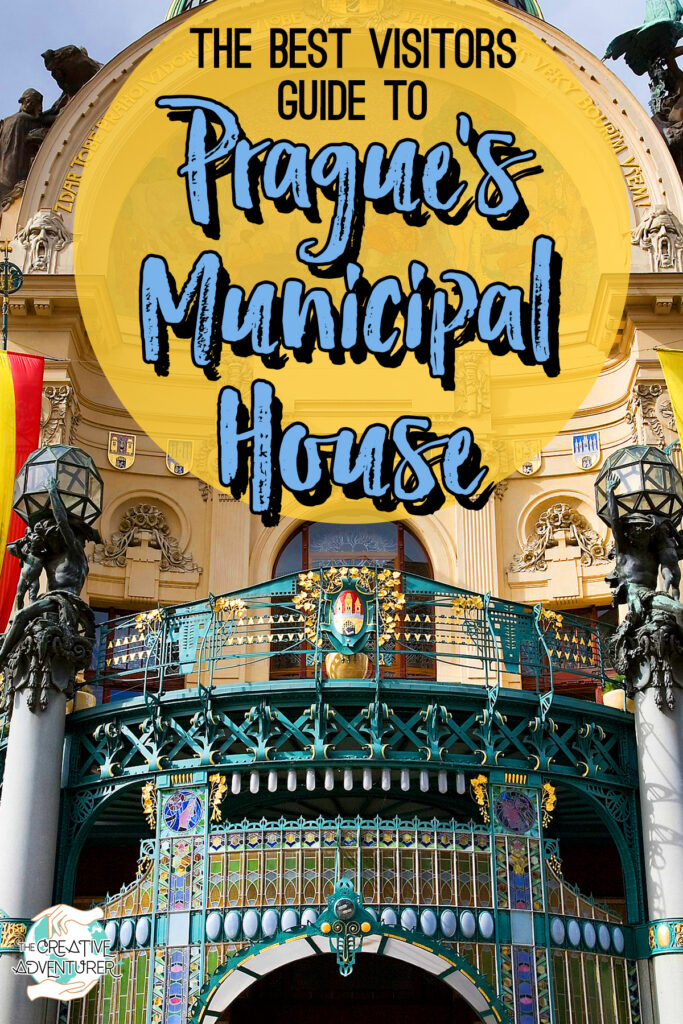


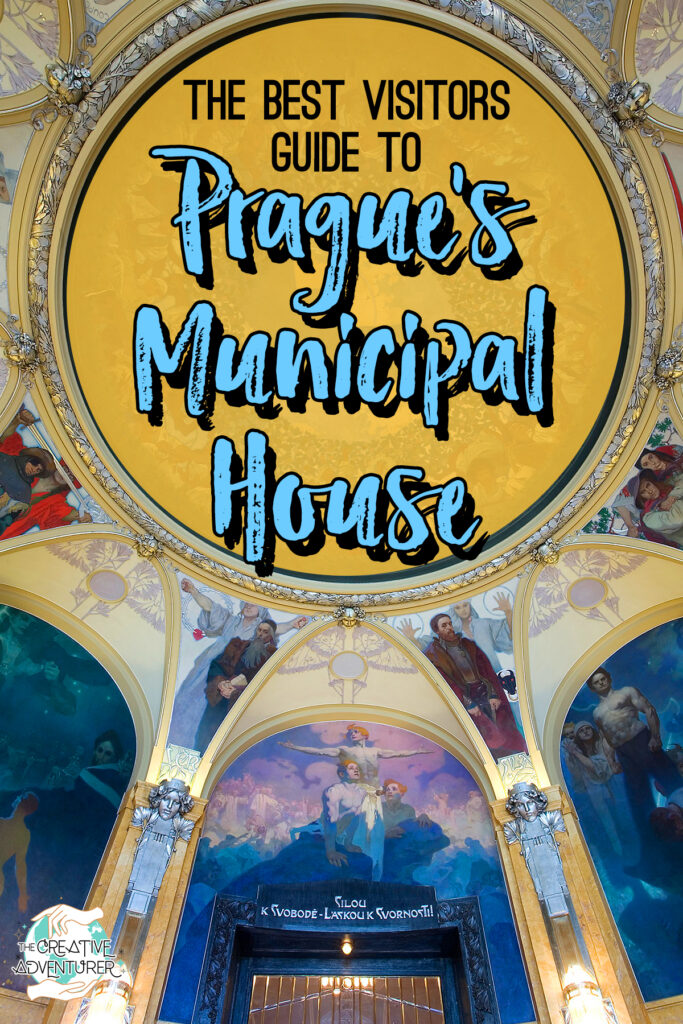



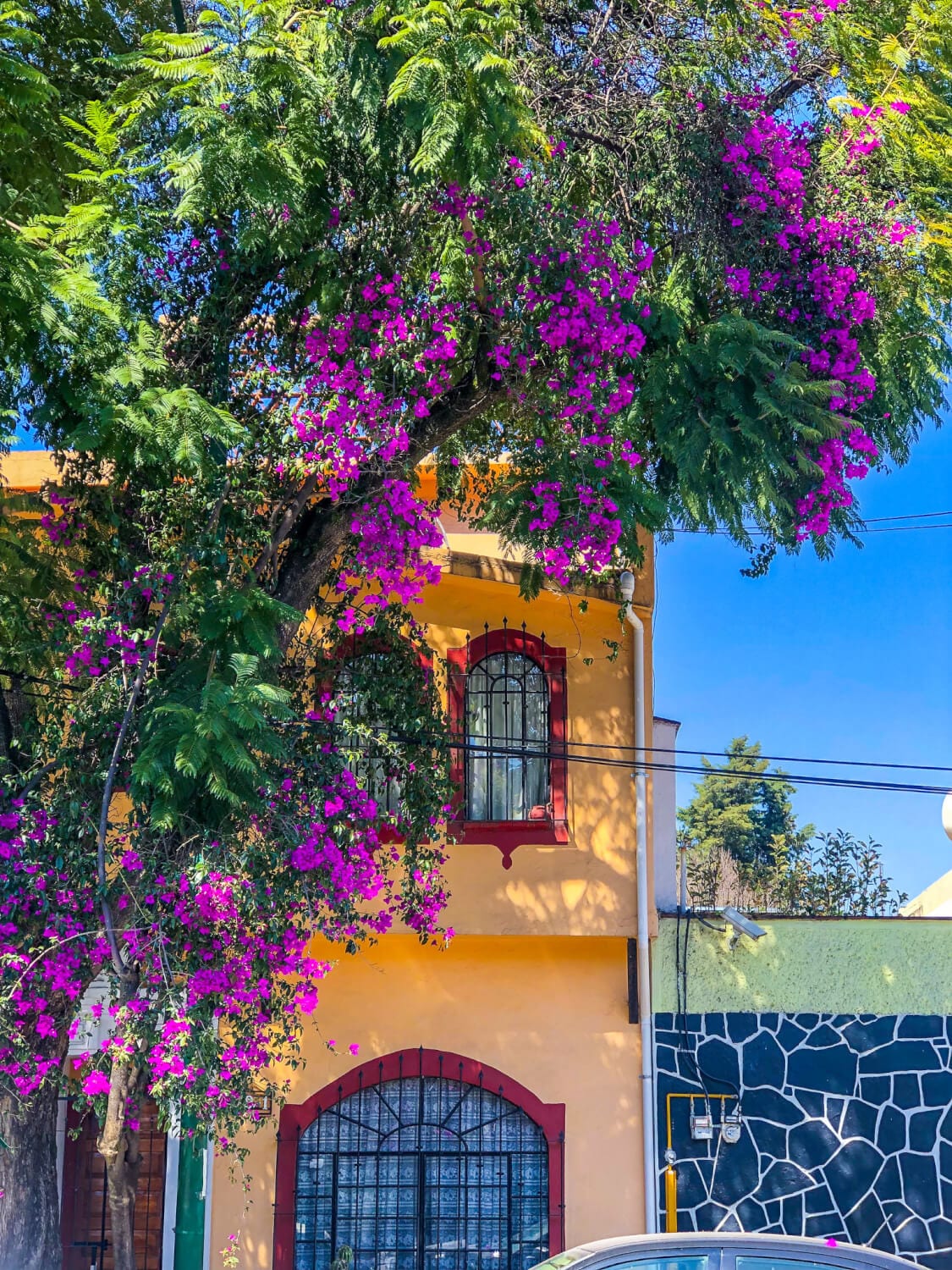
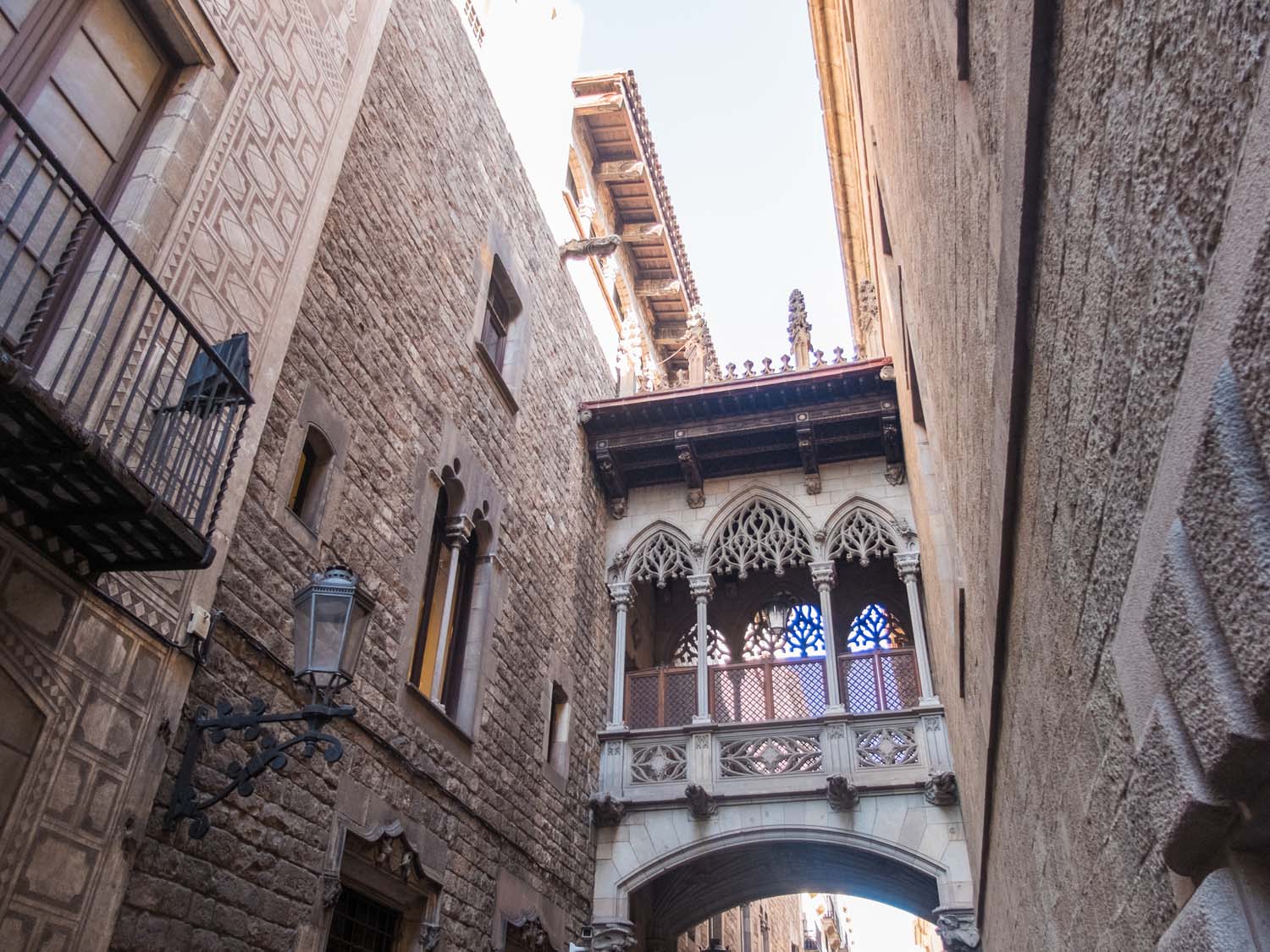
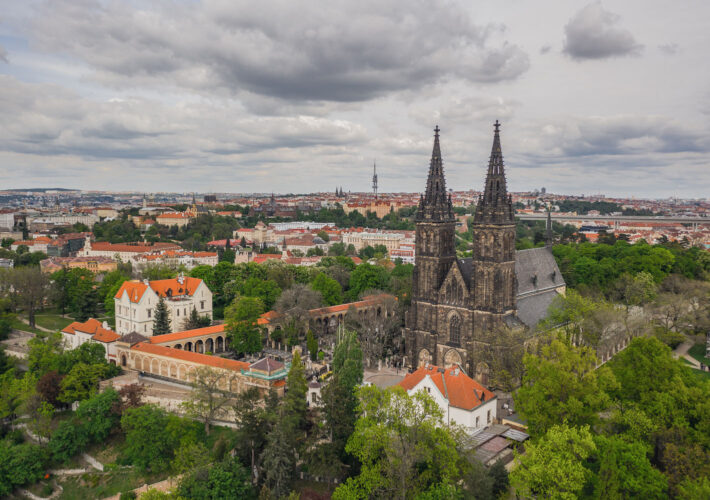
Leave a Comment